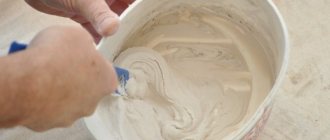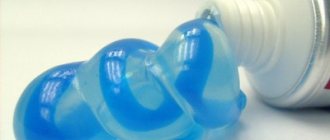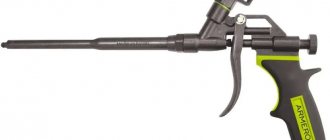Polyurethane foam sealant (popularly called polyurethane foam) is a professional product, the use of which significantly increases the sound and heat insulation properties of the treated surface and helps securely fasten individual structural elements.
After application, the airy foam turns into a dense mass in a matter of minutes, which is very difficult to clean.
Only with the right products is it possible to solve the problem of dried sealant stains. Read the article about how to clean dried polyurethane foam from various surfaces.
Peculiarities
Modern manufacturers of construction equipment offer a wide range of high-quality and convenient guns for working with polyurethane foam. The rules for cleaning this instrument depend largely on its type.
Today the following types of mounting guns are offered for sale:
- Plastic . They are generally considered disposable, since plastic is an intolerable material. This tool does not need to be cleaned. If the work of filling the seams is completely completed, and there is still foam left in the balloon, then it is necessary to wipe the nozzle of the gun from any remaining sealant, and in the future the gun with the balloon can be used again.
- Metal . They are characterized by durability and reliability. A pistol made of high-quality metal can be used for several years. This option can be easily disassembled for thorough cleaning of foam residues.
- Teflon . This variety is the most durable, high-quality and expensive. Each metal part is protected with a Teflon coating. Cleaning this gun is quite easy. The tool can be disassembled to remove the sealant.
The mounting gun offers many advantages:
- produces precise dosage of foam;
- regulates the speed of sealant supply;
- allows the use of foam even in places with limited access;
- It is enough to release the trigger to stop feeding the material;
- allows you to use only part of the container with sealant, while you can be sure that the foam will not harden until the next time;
- If you use the gun every day, there is no need to remove the frozen material.
The peculiarity of the mechanism of the mounting gun is that during pauses between work it guarantees complete protection of the sealant from oxygen, so the foam is not prone to drying out. The tightness of the valve is ensured by the foam residues that remain at the end of the tube, and the closed trigger mechanism is responsible for the tightness of the cylinder.
To start working again, just cut off the foam ball on the tool nozzle.
What not to do and why?
There are several restrictions that you should remember before starting the process of removing hardened polyurethane foam.
Thus, dried polyurethane foam sealant should never be washed off under pressure of water. The result of such actions will be even more hardened pollution (foam expands under the influence of water).
Do not scrape the frozen layer from the surface with a knife or rub it with abrasive powders (scratches and abrasions that remain in place of the dried foam cannot be removed).
Do not apply solvents to varnished or painted surfaces. The result of such cleaning is whitish, worn-out gray hair, which is impossible to get rid of.
Acetone-based compounds should not be used to clean iron doors. By reacting with the surface, the polyurethane foam penetrates even more deeply into the thickness of the metal. Subsequently, under direct sunlight, particles of sealant appear on the iron surface in the form of yellow, indelible stains.
When should you clean?
When choosing a high-quality spray foam gun, you should focus on the material and price of the tool. Expensive options are characterized by a long service life. There is no need to buy a new tool every time, so an expensive gun can easily pay for itself.
The lifespan of a mounting gun depends on its maintenance. After work, sealant remains inside the tool. It will not damage the product if you quickly clean the nozzle, barrel, adapter and other elements of the mechanism.
It is not always possible to clean the foam gun after finishing work, so many people are faced with hardened foam. In this case, eliminating it will take more effort and time.
Inexperienced craftsmen do not always understand why they need to clean the gun, so they ignore this procedure. As a result, with further use, it stops working because the foam has dried out and the barrel is clogged. The tool requires cleaning if the repair and construction work has already been completed . Next time it will be ready for use.
If you need to seal the seams with foam once, then there is no need to spend money on buying a gun; then you can get by just with a bottle of sealant with a special applicator.
According to experience, even home craftsmen prefer pistols, since they will have to be used more than once.
If you clean it correctly and regularly, it will last for many years.
Cleaning the Main Valve
It is performed without dismantling the entire mechanism. If the foam has set and blocked the lever:
- Don't push it too hard. This can damage the base frame;
- Cut the sealant from the tip of the barrel with a blade, try to make a recess;
- Drop remover inside;
- Lower the gun with the barrel down and drop solvent into the stem so that the liquid flows towards the barrel;
- Wait 20–30 minutes;
- Using progressive movements, press the hook until it is released and begins to move freely;
- After washing the lever, try screwing on a tube of cleaner and blowing through the mechanism.
If the trigger is still blocked, a complete flush of all parts is required.
What can I wash it with?
To ensure that the gun is always ready for use, ideally it should be washed after each use. Experts recommend washing the tool, even if you plan to change the container with sealant from one manufacturer to another , or want to use foam of a different heat resistance.
Typically, materials from different companies have different impurities in their composition, and if they come into contact, they can turn into a mixture that no cleaner can eliminate. The tool will have to be thrown away.
When purchasing a sealant, you should immediately purchase a cleaner so that they are from the same manufacturer . This approach will allow you to clean the gun quickly and easily, since the company has produced the most effective cleaner for personally produced sealant.
In reality, you don’t always have a cleaner at hand or free time to wash the tool, so washing the gun is usually done at the end of the working day.
If there is no special means for cleaning tools from foam, then you can use improvised means.
One of the most effective home methods is to use Dimexide. With its help you can dissolve the foam in a few minutes.
Care Tips
The spray foam gun requires special care. If you do not clean it regularly after use, it will stop working. It doesn’t take much time to wash this instrument; the procedure itself will take no more than 20 minutes, so don’t be lazy, since the working condition of the device depends on it.
If you clean the foam gun at home yourself, you must follow safety precautions. Remember that the solvent is a chemical and can be harmful to human health.
Basic safety precautions when cleaning a foam gun:
- The nozzle should always be directed downwards, as this will prevent the cleaner from getting on exposed areas of the body, eyes or clothing.
- The container with solvent or polyurethane foam should always be kept away from direct sunlight, heating devices and open flames.
- The used solvent container must not be burned.
- Do not smoke while flushing the gun.
- It is advisable to carry out all work wearing protective gloves and goggles.
- If liquid gets into your eyes, you should immediately consult a doctor.
- If the solvent gets on the skin, you need to treat the affected area with a special solution (one teaspoon of soda per 200 ml of warm water) or wash off the solution with laundry soap under a strong stream of water.
How to clean a gun from dried polyurethane foam, see the following video.
I bought a can of foam, used it a little, and now it has apparently dried up in the hole where it comes out of the can. This has happened before, but it was easy to get out of there. And now I’ve been poking around, but I haven’t gotten any results. Something else can be done: it would be a pity to throw it away - it’s almost full yet.
Throw it away if you don’t want to get yourself up to your ears in this foam :-).
I also did it with a self-tapping screw, you can try pumping in a little solvent with a syringe, but who the hell knows what the valve in your bottle is made of
I probably didn’t express my thought correctly - I picked out what was visible with my eyes, but it didn’t give any effect. either it has dried out very deeply somewhere and does not want to lag behind, or this valve (or whatever you call it) is completely jammed. Does this happen? If you press for a very long time and diligently, the foam begins to flow a little, but through the gap between the valve and the can (there is such a rubber seal there).
2 ahabr: That's it, in the trash. Next time, after partial use, unscrew the tube, unscrew the L-shaped adapter, rinse everything inside with acetone, and pour a little acetone a couple of times into the valve itself on the can. If washed well, the cylinder can be used 2-3 more times.
I would try to pour the solvent into where the foam was pulled out, put it vertically, and cover it with something on top if the solvent dissolves the foam, hurray it worked, and if there is a valve, then in a vertical position only gas should come out, and the foam itself should remain inside, although I like it more and more message number 2 from Artsan ps, after partially using the balloon, I placed it vertically (bottom down) and briefly pressed the gas valve, the gas blows out the remaining foam from both the valve and the tube
Yes, it’s annoying to throw away half-used foam cans, 100 rubles is still a shame. After use, I unscrew the tube, clean it with a wire without fanaticism, the foam will still remain a little, it will swell and dry out, but then it can be easily pushed out. And I insert a 3.5x35 screw into the valve itself on the cylinder (it fits perfectly), without cleaning it with a solvent before. Then, before using it again, I remove the screw along with all the foam that has dried on it. Sometimes it really doesn’t work and something inside the valve dries up. Then in the trash.
Similar topic from an old forum » >
Throw away the cylinder. There is only one correct way to store a started can of foam. field of work, leave the can with the tube before the next use, remove the tube, crush the dried part of it with your fingers, push through the remaining foam with a knitting needle or wire. Over the past 13 years, I have repeated this recipe several thousand times, and people are still experimenting with washes and screws. )))
2 BOARD: How do you remove dried foam from the cylinder valve in this case? And it is not very well removed from the L-shaped adapter mechanically.
Read also: Screwdriver battery temperature sensor
If you do not remove the tube, the foam in the valve does not harden. You take off the tube, screw another one onto the cylinder (from the new one) and in front. The L-shaped adapter is easily pulled out of the tube and is easy to clean with a self-tapping screw when the foam in it hardens.
BOA(chick) wrote: Over the past 13 years, I have recited this recipe several thousand times, and people are still experimenting with washes and screws. )))
After the 10th canister I used, I started thinking about a pistol. Has such an idea ever occurred to you?
2 aterney: How long does it take for it not to harden? 1-2 days? It won't be enough! (c) m/f “Last year’s snow was falling.” With continuous building in large volumes this is normal, but in the “final stages of installation” it is no longer suitable. PS When I get tired of washing, I’ll buy a gun.
After working with foam with a gun, the desire to buy manual cylinders disappeared completely. I bought a pistol. After work, I dangled the nose in acetone and put it in the closet. A month later I took it out and continue to use it. Very comfortably.
PS The main thing is that the gun is good and the foam in it does not dry out.
A week - exactly, repairs are done on weekends :-).
Being the first seller of Macroflex in Russia, many thoughts came to my mind. ))) And I thought about what and how to do with this foamy stickiness back in 1994. Foam, with a tightly screwed trigger with a tube, freezes to a maximum of 5 - 10 cm and is stored until the end of the shelf life (I mean from normal manufacturers). It does not freeze in the valve and trigger due to the lack of air. The same thing happens in a pistol with a wound tube. And the tubes can be used repeatedly by stretching them and cleaning them with a knitting needle. Foam does not stick tightly to P/E.
It often happens that the pressure in a started cylinder is released. As a result, it has not yet ended, and practically nothing can be squeezed out. If all the dried foam that is visible has been removed from the tube (the one on the cylinder itself), but nothing comes from there, then the cylinder can be safely thrown away. Next time, buy a cylinder from another manufacturer, maybe its valve will hold better.
darkstar wrote: It often happens that the pressure in the started cylinder is released. As a result, it has not yet ended, and practically nothing can be squeezed out.
That's right, this happened to me. In a half-used cylinder, after about a month, foam still remains and even comes out, but in much smaller quantities than one would expect. It seems that the gas has simply gone almost completely. I only work with macroflex.
2Remont_Forever , Gas is indeed leaking, I just checked it last night
I came to the conclusion long ago that if you start a bottle, you should use it up in no more than a couple of weeks. So any, even the smallest job means spending the entire cylinder. In any case, they can no longer be used.
The balloon has most likely given up the ghost and can only be thrown away. Guys, switch to decent foam guns and you will forget these household cylinders with a straw like a bad dream!
The valves can, of course, leak, but that’s not the main reason. The instructions in the instructions are to hold the container upside down. When using the cylinder in a horizontal or other position, the gas begins to escape in addition to the foam and ends before all the foam is pushed out. And this is the main reason.
turner wrote: Guys, switch to decent foam guns and you will forget these household cylinders with a straw like a bad dream!
Yes, but only a good pistol costs from 600 rubles. And cylinders with tubes are utter disgusting
BOA(chick) wrote: Being the first seller of Macroflex in Russia, many thoughts came to my mind. ))) And I thought about what and how to do with this foamy stickiness back in 1994. Foam, with a tightly screwed trigger with a tube, freezes to a maximum of 5 - 10 cm and is stored until the end of the shelf life (I mean from normal manufacturers). It does not freeze in the valve and trigger due to the lack of air. The same thing happens in a pistol with a wound tube. And the tubes can be used repeatedly by stretching them and cleaning them with a knitting needle. Foam does not stick tightly to P/E.
Came to the same conclusion. Therefore, after using it a little, I put the cap from the jar on the end of the tube. Some more foam is poured into it and hardens. Then next time you can simply tear it off, cut off part of the tube or clean it, as you like, and continue to use it.
I'll tell you another scary story from my life. The other day I took out two cans of macroflex foam from old stock. One is from 1999 - still with a paper label, and frost-resistant. And the second one is from 2001. First I used a can of 99, but with difficulty I pressed the valve, it dried out very badly. The foam turned out to be quite normal, not as smelly as it is now, but it expanded at the right time and to the right volume. So I even saved money. But the second cylinder of 2001 could not push through the valve, it became loose and it fell off. It’s worth it now, it’s a shame to throw it away. You might say it's a cheapskate, but it's a pity to throw away such a rarity.











